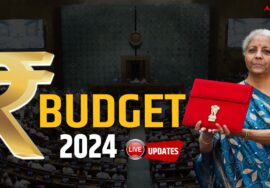rupee: What triggered Rupee's lifetime low
[ad_1]
The Reserve Bank of India (RBI) is estimated to have sold about $1.5 billion through a mix of spot and forward-market interventions using multiple state-run banks, market sources told ET. The central bank didn’t respond to ET’s queries immediately.
The rupee Wednesday lost 0.4% and was the third-worst performing Asian currency after the Philippine peso and Thai Baht. On June 13, the local unit had hit 78.28/$, its erstwhile record low.
“There is a lack of confidence among investors who are averse to taking any new bets,” said Shushant Mohanty, general manager – treasury, . “The rupee is likely to remain volatile touching new lifetime lows amid a bout of fund outflows from India. Unless oil prices come down, fears of a global recession will continue to haunt the financial markets.”
Loretta Mester, president of the Cleveland Fed, said on Sunday that she would not predict any recession, bringing cheers across markets. But the indices and exchange rates erased initial gains on commentary from industry tycoons that the threat of a recession in the US was more real than ever.
Crude oil prices remain elevated amid an ongoing Russia-Ukraine war. It is likely to fall only when OPEC, the apex body of oil producing nations, decides to increase production. Moreover, speculation is rife that the US may cut sanctions on Iran, a large oil producing country. Brent Crude oil has been hovering in the broad range of $105-125 per barrel in the past four weeks.
High global oil prices are detrimental to India’s economy as the nation imports four-fifths of its oil needs.
This calendar year, foreign portfolio investors sold a net of $28.48 billion in local securities, show data from NSDL.
“The central bank is seen cutting the rupee’s loss against the dollar,” said Anindya Banerjee, currency analyst, Kotak Securities. “However, it is unlikely to hold any level (as sacrosanct) as India is not immune to global emerging market trends.”
The central bank has intervened in the currency market via two legs. While select banks were seen selling dollars in the spot, they were backing up such action via buy-sell swaps. The move protects forex reserves and helps maintain rupee liquidity in the system.
The one-month Bloomberg Volatility Index rose 17 basis points versus a 26-basis-point increase in the dollar-renminbi gauge, show data compiled by ETIG.
One basis point is 0.01%.
“The rupee has continued to depreciate beyond our expectations,” said Abhay Gupta, FX strategist at Bank of America. “The risks are still skewed toward more depreciation for INR as the fundamental outlook has deteriorated further primarily due to higher oil and other commodities.”
At the current spot levels, Bank of America expects the rupee to touch 81 , revised from 79 earlier, by the end of the calendar year.
The rupee has been slipping in its ranking this month. In June, it lost nearly a percentage point to become the fifth best performing Asian currency. Just about a week ago, it was the second-best performing unit in the continent, losing about half a percentage point to the greenback, ahead of the Chinese Renminbi.
[ad_2]
Source link










